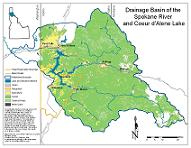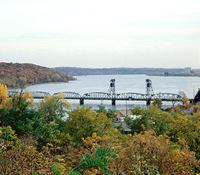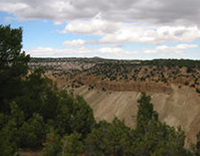Case Briefs
Bankhead National Forest Health and Restoration Plan

The USDA Forest Service was seeking ways to engage affected parties in developing a Forest Health and Restoration Initiative for the Bankhead National Forest in Alabama. Controversy and mistrust had characterized public reaction to Forest Service management of the Bankhead in recent years. The Forest Service wanted to reverse this trend and create a more inclusive environment for forest management.
...read more
Barry M. Goldwater Range: Military Training and Protection of Endangered Species

The Barry M. Goldwater Range (Goldwater Range) is one of the premier combat aviation training ranges available to the Department of Defense and will remain critical to the military readiness of the armed services into the foreseeable future. At the same time, the Range comprises 42 percent of the current U.S. habitat for the endangered Sonoran pronghorn and is necessary to the recovery of the species.
...read more
BLM Bridgeport Land Sale Mediation

Since 1995, the Bridgeport Indian Colony had been interested in purchasing about 40 acres adjacent to the reservation from the Bureau of Land Management (“BLM”). But concerns of town residents regarding the tribe’s commercial development plans and the potential impact on traffic, local businesses, taxes, and the environment blocked the sale, which ended up in a federal appeal process
...read more
BLM Scattered Apples Timber Sale Mediation

Together with a conservation group, residents of Williams, Oregon filed a lawsuit against the U.S. Bureau of Land Management (BLM) over a timber sale. This led the BLM and other affected parties to request the assistance of the U.S. Institute. The U.S. Institute worked with contracted mediators to conduct an initial assessment of the situation.
...read more
California Pilot Workshop on ESA Consultation

An interagency pilot program launched in California set the stage to create timely and effective consultations related to protected species issues and new transportation projects.
...read more
Coeur d’Alene Lake Management Plan

Mining upstream of Lake Coeur d’Alene in the Silver Valley has resulted in the deposition of sediments containing zinc, lead, and other dissolved metals around the bottom of the lake. Bunker Hill Mining and Metallurgical Complex Superfund site is upstream of the Lake and requires a Lake Management plan to address potential issues related to metals in the lake sediments.
...read more
Dixie-Fishlake Forest Plan Revision

The Dixie and Fishlake National Forests are designated as two separate forests, yet they share many resource issues and have similar landscapes. In 2001, supervisors for both forests decided to work together to revise forest plans that had been in place since 1986. The Institute worked with the Forest Service to develop a collaborative process including local stakeholders. The goal was to develop a common vision for future management of the forests. Stakeholders were engaged early in the process to propose forest plan revisions.
...read more
EPA-Quapaw-Oklahoma Water Quality Assessment and Design

The Quapaw Tribe, State of Oklahoma, and the U.S. EPA Region 6 asked the U.S. Institute to determine the potential for assisted negotiations in the development of a Cooperative Agreement addressing water quality standards among the State of Oklahoma, the Quapaw Tribe, and the U.S. EPA Region 6. The assessment revealed an interest on the part of the state and tribe to continue negotiations.
...read more
Military Community Compatibility Committee (MC3)

Aircraft noise from training flights at the Davis Monthan Air Force Base has long been an issue for Tucson residents who live and work near the base. In 2005, as the conflict began to escalate, community leaders asked the U.S. Institute for help. The Institute brought members of the affected community together for dialogue. The group agreed to work on minimizing the impacts of aircraft noise on residential neighborhoods while maintaining the viability of the base. The U.S. Institute helped the group select a facilitator for their discussions over the next year.
...read more
Mt. Hood National Forest Recreation Management Plan: Collaborative Intervention

The Mt. Hood National Forest covers 1.1 million acres in Northwestern Oregon. The forest receives more than six million national and international visitors annually. It also serves as an urban national forest for residents of Portland and Vancouver who live within a two-hour drive of the Forest.
...read more
Oregon Coast Coho Project

Populations of salmon and other oceangoing fish have declined dramatically in the Pacific Northwest. In an effort to conserve and rebuild the coastal coho population, the National Marine Fisheries Service (NMFS) and the State of Oregon formed the Oregon Coast Coho Project in 2003. In early 2004, NMFS and the state asked the U.S. Institute and the Oregon Consensus Program for help. The Institute already had a funding agreement with NMFS to provide neutral assistance on salmon recovery efforts in the Pacific Northwest.
...read more
Pennsylvania Data Sharing Forum

The Federal Highway Administration asked the Institute to help Pennsylvania DOT and area natural resource agencies find ways to share data needed to complete highway projects. A steering committee of agency was formed to help plan the Forum. The Forum included presentations from the different agencies on their respective missions and data needs and followed by discussions of how to address the issue of better access to species data.
...read more
Sage-Grouse Range-Wide Issues Forum

Petitions to protect the Greater Sage-grouse under the Endangered Species Act (ESA) began in 1999. The U.S. Fish and Wildlife Service ultimately decided that the listing was “not warranted.” Yet these petitions prompted states with Sage-grouse populations to begin conservation planning at the local and state levels. To be successful, individual local plans needed to be coordinated. So the U.S. Institute was asked to work with the Western Association of Fish and Wildlife Agencies to bring diverse stakeholders together in a forum.
...read more
Sawtooth National Recreation Area Planning

Located in central Idaho, the 756,000 acre Sawtooth National Recreation Area (SNRA) is part of the Sawtooth National Forest. The USDA Forest Service decided to develop a plan for the recreation area that was separate from, but coordinated with, the forest plan because of the recreational area's unique setting and management challenges.
...read more
Signs of the Time - Outdoor Advertising Controversy

Billboards are a familiar sight on many highways across the United States. The federal Outdoor Advertising Control (OAC) Program was set up to provide rules for billboards and other outdoor advertising signs along interstate and other highways. There has been growing controversy about the how these signs are regulated since 1965 when the Highway Beautification Act (HBA) was passed.
...read more
St. Croix River Crossing Controversy

In the 1950s, Stillwater, MN and Houlton, WI began discussing how to improve local transportation. The towns are currently connected by an historic lift bridge over the St. Croix River, a waterway within the Wild and Scenic River System. In 1995, federal and state transportation agencies decided to build a new bridge and remove the lift bridge. But an environmental group successfully challenged this decision in court. By 2000, the intersection of three public policy goals – enhancement of transportation services, preservation of historic resources, and protection of a wild and scenic river
...read more
Sun River Watershed Collaborative Process

When representatives of the Sun River Watershed Group first contacted the U.S. Institute in July 2002, the Watershed Group had already been meeting for over 10 years to discuss how to reduce water conflicts among the river’s major water users. Two irrigation districts and a large ranching operation were in conflict over water rights, while fishery interests were concerned about the declining health of the Sun River. The Watershed Group approached the U.S. Institute seeking a facilitator who could work with all parties to resolve these issues.
...read more
Tucson Basin Shooting On Public Lands

Non-hunting shooting on public lands emerged as a controversial issue during preparation of the Resource Management Plan (RMP) for the Ironwood Forest National Monument (IFNM). In May, 2002, the Bureau of Land Management (BLM) asked the U.S. Institute for Environmental Conflict Resolution for help.
...read more
Vermillion Basin Plan Revision

In 2004, the Bureau of Land Management (BLM) began revising its Resource Management Plan (RMP) for the Vermillion Basin area. The BLM wanted an adaptive management proposal that would employ an “out-of-the-box” collaborative planning approach. The North Colorado Stewardship (NWCOS), a newly established partnership representing a broad coalition of area stakeholders, indicated interest in working with the BLM to develop the RMP. This citizen-based approach was designed to keep the community engaged in developing landscape management goals, monitoring the process, and making appropriate adjustme
...read more
Washington Navy Yard Case

This case involved a multi-party dispute over a National Pollutant Discharge Elimination System storm water permit for the Washington, D.C. Navy Yard. The permit was issued by the Environmental Protection Agency. The U.S. Navy appealed the permit. They alleged that permit conditions involving effluent limits, monitoring parameters, and other study requirements were based on erroneous findings of fact or conclusions of law. The Anacostia Watershed Society, represented by the Earthjustice Legal Defense Fund, also appealed the permit.
...read more